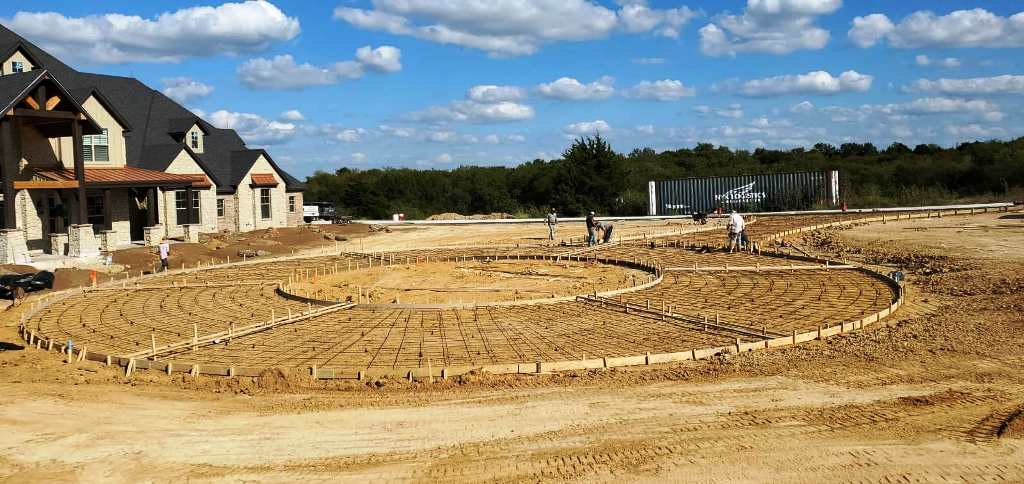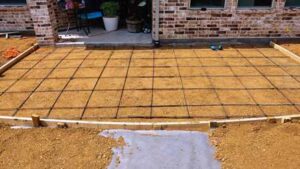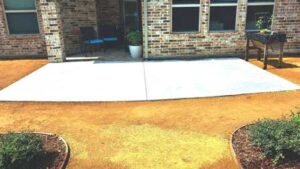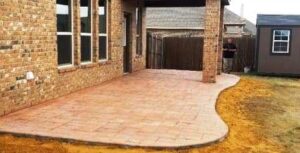
mainstreetlawn
5 Tips to Building a Concrete Patio
Concrete is one of the most versatile and best stone patio paving materials available for building a solid base or structure. Concrete is used to create a strong foundation for homes, patios and most stonework. In addition, decorative concrete can be used to create aesthetically pleasing finished surfaces for driveways, patios and pathways.
In this post, we’ll give 5 tips to building a concrete patio by answering the most commonly asked questions that we’re asked about working with concrete.

How Thick Do I Need to Pour a Concrete Patio?
In order for your concrete to provide the necessary support for foot traffic as well as to sustain heavier objects like stonework, trash cans, vehicles, etc, you should plan to pour at least 4 inches thick of concrete for common use like sidewalks or short retaining walls and at least 6 inches for vehicle use.
In addition to pouring a minimum of 4-6 inches of concrete, you should install rebar, short for reinforcing bar within the concrete.

How to Pour a Concrete Patio Against a House?
When pouring a concrete patio against your home, it will be necessary to attach the patio to the home’s foundation. To do this, you will need to drill holes into the foundation. The holes should line up with where you place the rebar supports within the patio and you will slide the rebar from the patio rebar structure into the holes you drilled in the foundation. This way, the strength of your home’s foundation is lending further support to the patio to help keep from separating and shifting.

What Should it Cost to Pour a Concrete Patio Slab?
The cost to pour your concrete patio slab will depend entirely on the amount of concrete needed. You should account for the cost of preparation materials like wood for framing, rebar, tool rentals, dump fees and permits along with concrete and labor costs.
If you decide to hire a masonry contractor to install your concrete patio, you should expect to pay between $10-$12 per square foot for standard finished concrete and a bit more cost for decorative concrete. Keep in mind that most companies have a $1,500 minimum for concrete work.

How to Pour a Concrete Patio Extension?
When pouring a concrete patio extension, you want the extension to become a part of the existing patio. To do this, you will need to drill holes into the existing concrete patio. These holes should line up with where you install rebar for your patio extension. Slide the rebar for the extension into the holes drilled into the existing patio.

How to Pour a Circular Cement Patio?
Pouring cement patios with rounded or circular edges, you will need to create a form with a rounded or circular shape. Rather than using a standard 2 x 4 for framing, you will install a more flexible bender board which is typically made from MDF (medium density fiberboard). The bender board is more flexible and can be manipulated to accommodate curves.
We hope these 5 tips to building a concrete patio will help with your next project. If you decide to DIY your concrete or stone patio installation, keep in mind that all of the materials needed are readily available at your local hardware store. Remember to be patient while working with concrete because it takes a lot of preparation, the results are fast and can last a lifetime.
Share this post
© 2024 · Main Street Lawn Care and Landscaping, LLC

